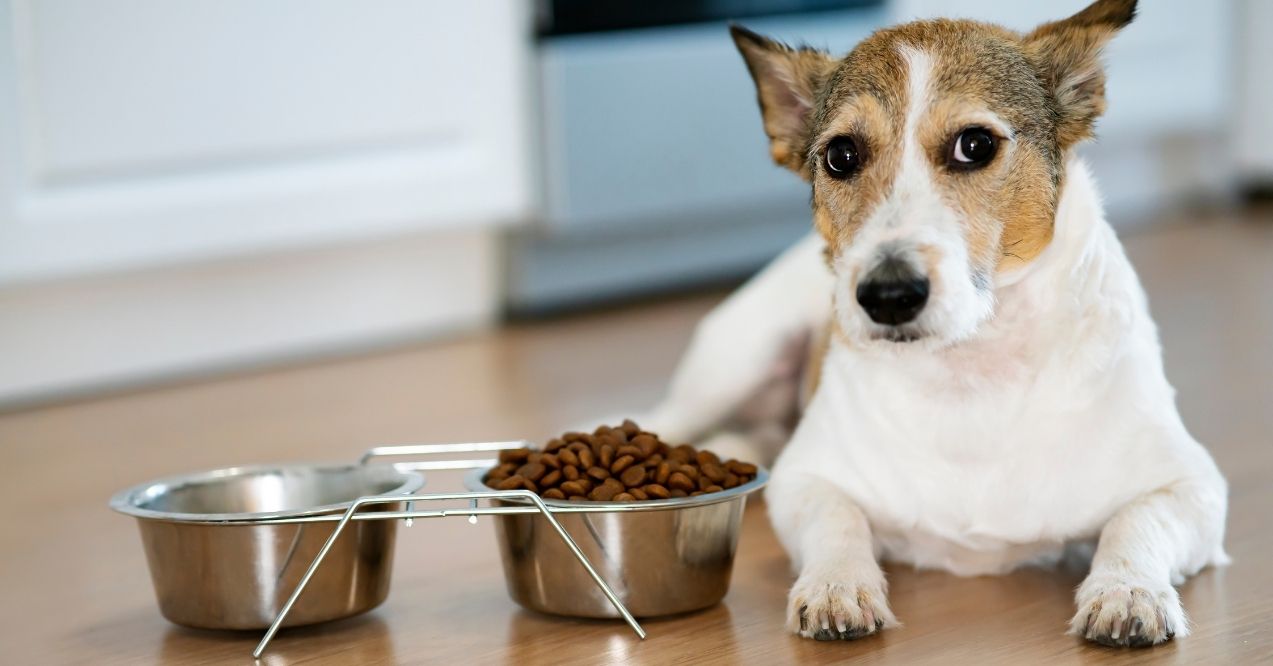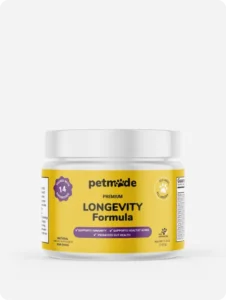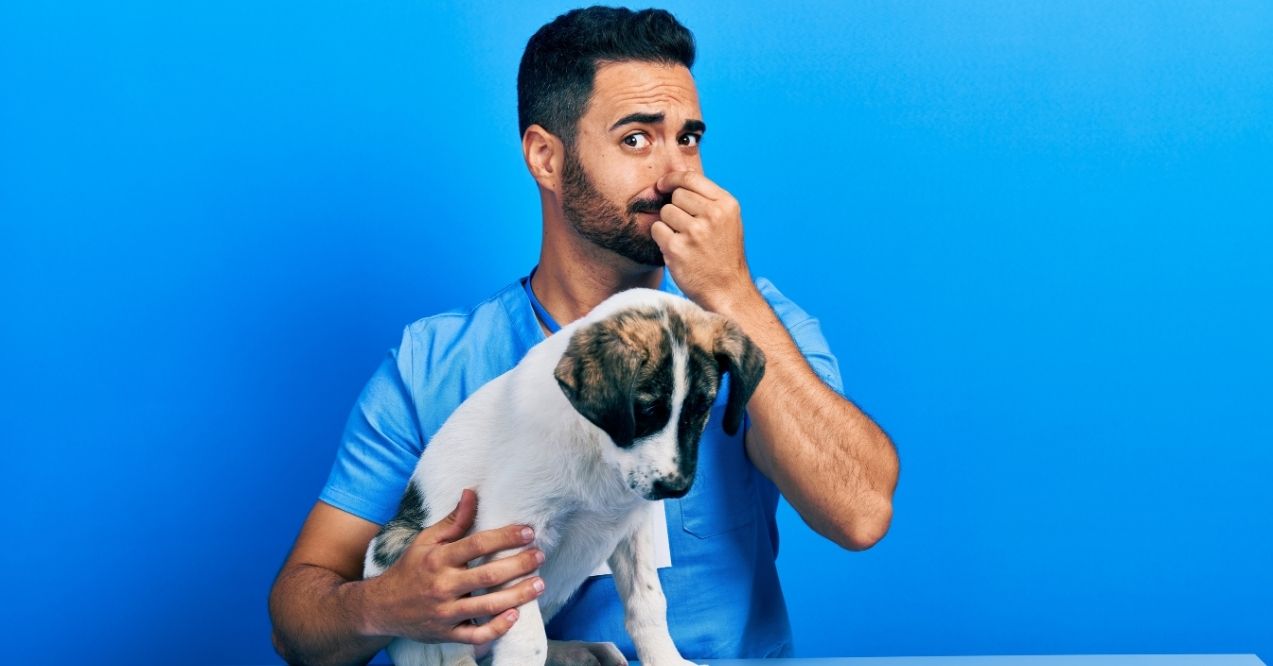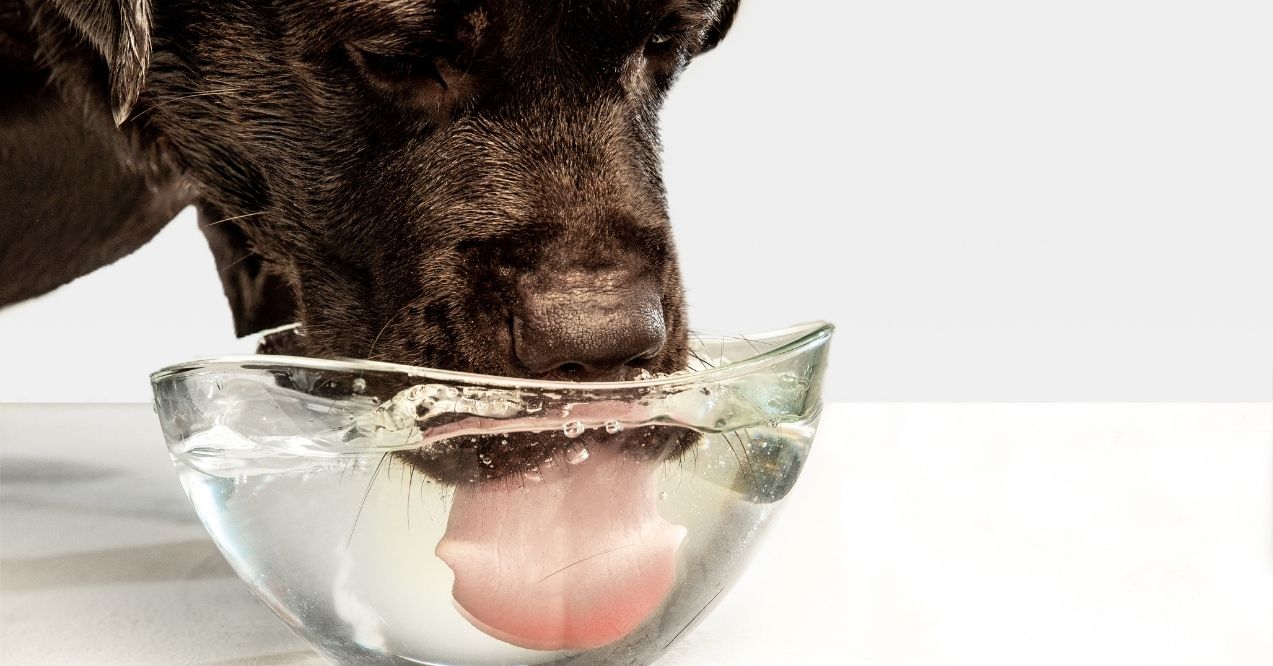What to Feed an Old Dog?
As our loyal companions journey into their golden years, their nutritional needs undergo subtle but important changes. Just like humans, dogs experience shifts in metabolism, energy requirements, and digestive efficiency as they age. Understanding what to feed senior dogs becomes a cornerstone of responsible pet care during this special life stage.
While puppies need fuel for growth and adult dogs require maintenance nutrition, older dogs benefit from thoughtful feeding approaches that support their changing bodies. With the right nutritional strategy, you can help your senior companion maintain a healthy weight, sustain energy for daily activities, and support overall well-being during these precious later years.
Nutritional Shifts in Aging Dogs
As dogs enter their senior years, their bodies undergo several important changes that directly affect their nutritional requirements. A naturally slowing metabolism means your older companion typically needs fewer calories to maintain a healthy weight. This metabolic shift, combined with reduced physical activity, creates a delicate balance when planning a diet for senior dogs.
Senior dogs often experience changes in their:
- Protein needs – While they require fewer overall calories, older dogs actually benefit from higher-quality, more digestible protein sources to maintain muscle mass
- Fat metabolism – Their ability to process certain fats changes, making omega-3 fatty acids increasingly valuable for supporting comfort and mobility
- Digestive efficiency – Many senior dogs need additional fiber to support digestive health and regularity
You might notice your aging companion becoming pickier about food or struggling with harder kibble. This could stem from dulled senses of smell and taste or dental discomfort. Some seniors develop texture preferences, favoring softer foods that require less chewing effort.
Staying attentive to these subtle shifts helps you adjust their nutrition appropriately, ensuring they receive proper nourishment despite age-related changes.
Observing Appetite and Energy
Paying close attention to your senior dog’s eating habits can reveal important clues about their well-being. Do dogs eat less as they age? While a moderate decrease in appetite is common, sudden disinterest in food warrants attention. Notice how your companion approaches mealtime – do they still show enthusiasm, even if they consume smaller portions? This engagement often signals normal aging rather than a concern.
Watch for changes in water consumption too. For those wondering why is my senior dog drinking so much water, an increase could simply indicate their body’s natural need for better hydration as they age. However, excessive thirst paired with appetite changes might suggest their nutritional needs aren’t being met.
Energy levels naturally fluctuate in older dogs, but they should still show moments of playfulness and engagement. The right food supports consistent energy throughout the day, helping maintain their spirit and vitality despite their advancing years.
Choosing the Right Food for Senior Dogs

Selecting the ideal food for your aging companion involves more than just grabbing a bag labeled “senior.” The perfect choice balances nutritional needs with physical comfort and personal preferences. As dogs age, their ability to chew, digest, and enjoy certain textures changes significantly.
Finding the right format – whether dry, wet, or something in between – can make all the difference in maintaining healthy eating habits and ensuring your loyal friend receives the nourishment they need.
Dry vs Wet vs Moist Foods
Each food type offers distinct benefits for senior dogs:
- Dry kibble – Provides dental benefits through gentle abrasion during chewing, though some seniors find it challenging on sensitive teeth
- Wet foods – Deliver built-in hydration – crucial for older dogs who may drink less naturally – and typically offer enhanced aromas that appeal to diminished senses
- Semi-moist options – Strike a middle ground, providing easier chewing with moderate dental benefits
Some pet parents supplement commercial diets with beneficial additions. Can dogs have fish oil? Absolutely – this supplement supports comfort and mobility, making it particularly valuable for senior companions. When considering home-prepared additions, focus on gentle ingredients that complement their main diet without disrupting nutritional balance.
Food Temperature and Texture
The sensory experience of mealtime changes dramatically for aging dogs. Slightly warming food releases enticing aromas that can reignite interest in eating, especially for seniors with dulled senses. Try heating wet food briefly or adding warm (never hot) broth to kibble. This simple adjustment often transforms a refused meal into an eagerly anticipated treat.
Texture modifications can similarly boost enjoyment. Try mashing wet food for easier licking, or soak kibble until it reaches a consistency your companion prefers. Some seniors develop specific preferences – perhaps enjoying a certain softness that feels comfortable on sensitive gums while still providing satisfaction from chewing. These thoughtful adjustments preserve dignity and pleasure in eating throughout their golden years.
Senior Dog Feeding Schedule
Establishing and maintaining a consistent senior dog feeding schedule becomes increasingly important as your companion ages. Routine provides comfort and security for older dogs who may experience anxiety with changing patterns. Their digestive systems often work more efficiently with regular, predictable mealtimes rather than sporadic feeding.
As metabolism and energy requirements shift, a well-planned schedule helps prevent hunger while avoiding overfeeding, creating a balanced approach that supports their changing nutritional needs.
How Often to Feed an Older Dog
Most senior dogs benefit from eating 2-3 smaller meals daily rather than one large portion. This gentler approach accommodates their slower digestion and helps maintain steady energy levels throughout the day. Consider scheduling meals at consistent times:
- Morning meal (around 8 AM)
- Midday feeding (around 2 PM)
- Evening portion (around 7 PM)
Choose quiet, low-traffic areas for feeding to minimize distractions and stress. Many older dogs appreciate having their own peaceful space during mealtimes, away from household commotion. This thoughtful scheduling supports better digestion and creates positive associations with eating, even as appetite naturally fluctuates with age.
How Much to Feed a Senior Dog
Determining how much to feed senior dog companions requires observation and flexibility. Start with package guidelines based on your dog’s ideal weight (not necessarily current weight), then adjust according to their body condition. You should be able to feel ribs with gentle pressure but not see them prominently.
Monitor your companion’s weight regularly:
- Check weight every 2-3 weeks
- Reduce portions slightly if gaining unwanted weight
- Increase if losing weight unintentionally
Seasonal changes often affect needs too; many seniors require fewer calories during less active winter months. Watch for behavioral cues like leaving food regularly (possible overfeeding) or searching for more after meals (potential underfeeding) to fine-tune their perfect portion size.
Nutrients That Support Aging Dogs
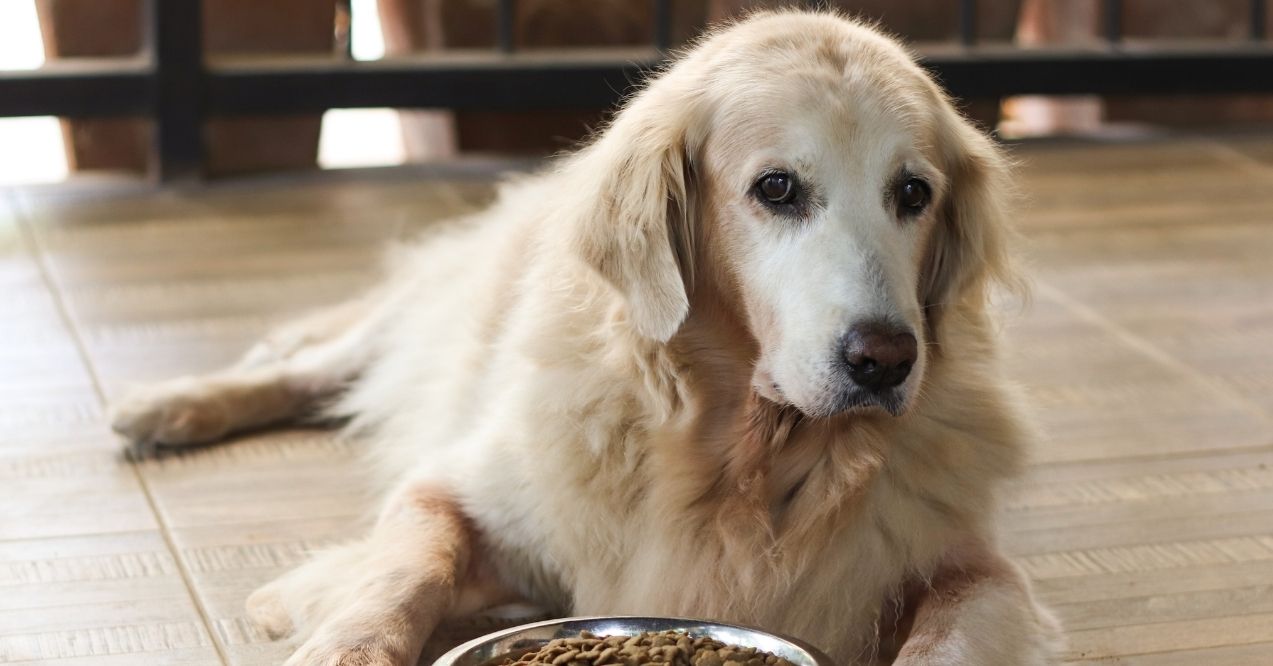
As your dog enters their senior years, their nutritional needs evolve to support changing bodily functions. Focusing on specific nutrients can promote comfort, maintain energy levels, and support overall well-being during this precious life stage. The right nutritional balance helps aging companions continue to thrive while addressing their unique needs.
Protein, Fats, and Fiber
As dogs age, their nutritional needs change. Ensuring they receive the right balance of protein, fats, and fiber is crucial to supporting their overall health and well-being. These key nutrients help maintain strength, support energy levels, and promote digestive comfort in senior dogs.
Protein – High-quality, digestible protein becomes increasingly valuable as dogs age, supporting lean muscle maintenance even as activity levels naturally decrease. Look for named animal proteins (like chicken, turkey, or salmon) as primary ingredients rather than generic “meat meals.” These concentrated protein sources help senior dogs preserve strength and mobility.
Fats – Beneficial fats play multiple supportive roles in aging dogs. Omega-3 and omega-6 fatty acids contribute to skin and coat health, keeping fur soft and reducing dryness. These fats also provide a concentrated energy source that’s easier for seniors to utilize than carbohydrates, supporting sustained vitality throughout the day.
Fiber – This nutrient becomes especially important for senior companions, promoting comfortable digestion and regular elimination. A balance of soluble and insoluble fiber helps maintain digestive comfort while supporting beneficial gut bacteria that contribute to overall well-being.
Nutrient Additions
Natural food additions can enhance your senior dog’s diet with minimal effort and significant benefit. Consider incorporating:
- Blueberries and other antioxidant-rich berries for cognitive support and overall vitality
- Small amounts of cooked pumpkin (1-2 tablespoons) which can be helpful when wondering how to help a dogs upset stomach or promote digestive comfort
- Cooked egg for highly digestible protein that supports muscle maintenance
- Bone broth for hydration, palatability, and joint support
- Plain, unsweetened yogurt in small amounts to support digestive balance
Transitioning to a Senior-Friendly Diet
When the time comes to adjust your companion’s nutrition to meet their changing needs, patience becomes your greatest ally. A gradual transition to senior-formulated food prevents digestive discomfort while allowing their system to adapt properly. Pay close attention to how your dog responds both physically and behaviorally during this change, as their reactions will guide your approach and timing.
7–10 Day Transition Plan
A methodical transition helps your senior companion adjust comfortably to their new diet:
- Days 1-2 – 75% current food, 25% new senior food
- Days 3-4 – 50% current food, 50% new senior food
- Days 5-7 – 25% current food, 75% new senior food
- Days 8-10 – 100% new senior food
This careful approach gives their digestive system time to adapt without upset. If you notice any changes in stool consistency or appetite, simply slow down the transition by lingering at the current ratio for an extra day before proceeding. Some especially sensitive seniors may need up to two weeks for a complete transition, which is perfectly normal and worth the additional time.
Signs Your Dog is Adapting Well
Your senior companion will show several positive indicators when adjusting successfully to their new diet. Look for consistent, well-formed stool without straining or looseness, which signals proper digestion. Their energy levels should remain steady or even improve slightly as the new nutrition supports their needs more effectively.
Positive mealtime behaviors offer excellent feedback too. Watch for:
- Maintaining interest in food throughout the transition
- Eating with similar enthusiasm as before
- Consistent water consumption
- Regular elimination patterns
- Bright, alert demeanor after meals
If your companion shows these signs, you can feel confident that their new senior-formulated diet is supporting their well-being appropriately during this important life stage.
Conclusion
Navigating your companion’s golden years means embracing changing nutritional needs with knowledge and compassion. Understanding what to feed old dogs is a journey of observation, adaptation, and care. From adjusting protein levels to introducing beneficial supplements, each thoughtful choice supports your senior friend’s continued vitality. Remember that consistency in scheduling, gradual transitions, and attentive monitoring form the foundation of successful senior nutrition.
By responding to your dog’s changing needs – whether through softer textures, warmed meals, or nutrient-rich additions – you’re not just feeding them; you’re nurturing their wellbeing. With the right approach to senior nutrition, you can help ensure your faithful companion enjoys comfortable, energetic, and joyful later years by your side.
Yes, many dogs naturally eat less as they age due to slower metabolism, reduced activity levels, and sometimes dulled senses of smell and taste. While a moderate decrease is normal, sudden appetite changes warrant attention.
Most senior dogs thrive on 2-3 smaller meals daily at consistent times rather than one large feeding. This approach supports their slower digestion, maintains steady energy, and provides structure they find comforting.
No, puppy food isn’t suitable for senior dogs. It contains excessive calories, protein, and fat designed for growth. Senior dogs need specifically balanced nutrition with moderate calories, high-quality protein, and supportive nutrients for aging bodies.
Yes, many fruits and vegetables make excellent additions to a senior dog’s diet. Blueberries, pumpkin, sweet potatoes, and carrots provide beneficial fiber, antioxidants, and nutrients that support digestive health and overall well-being.
Feed your senior dog based on their ideal weight rather than current weight, adjusting portions based on body condition and energy levels. Most seniors need 20-30% fewer calories than middle-aged adults while maintaining adequate protein.
Yes, appropriate food toppers like bone broth, plain yogurt, or cooked egg can enhance palatability and nutrition for senior dogs. Introduce gradually, choose wholesome options without added salt or seasonings, and account for the extra calories.
Advertisement. This site offers health, wellness, fitness and nutritional information and is designed for educational purposes only. You should not rely on this information as a substitute for, nor does it replace, professional medical advice, diagnosis, or treatment. If you have any concerns or questions about your health, you should always consult with a physician or other health-care professional. Do not disregard, avoid or delay obtaining medical or health related advice from your health-care professional because of something you may have read on this site. The use of any information provided on this site is solely at your own risk.
